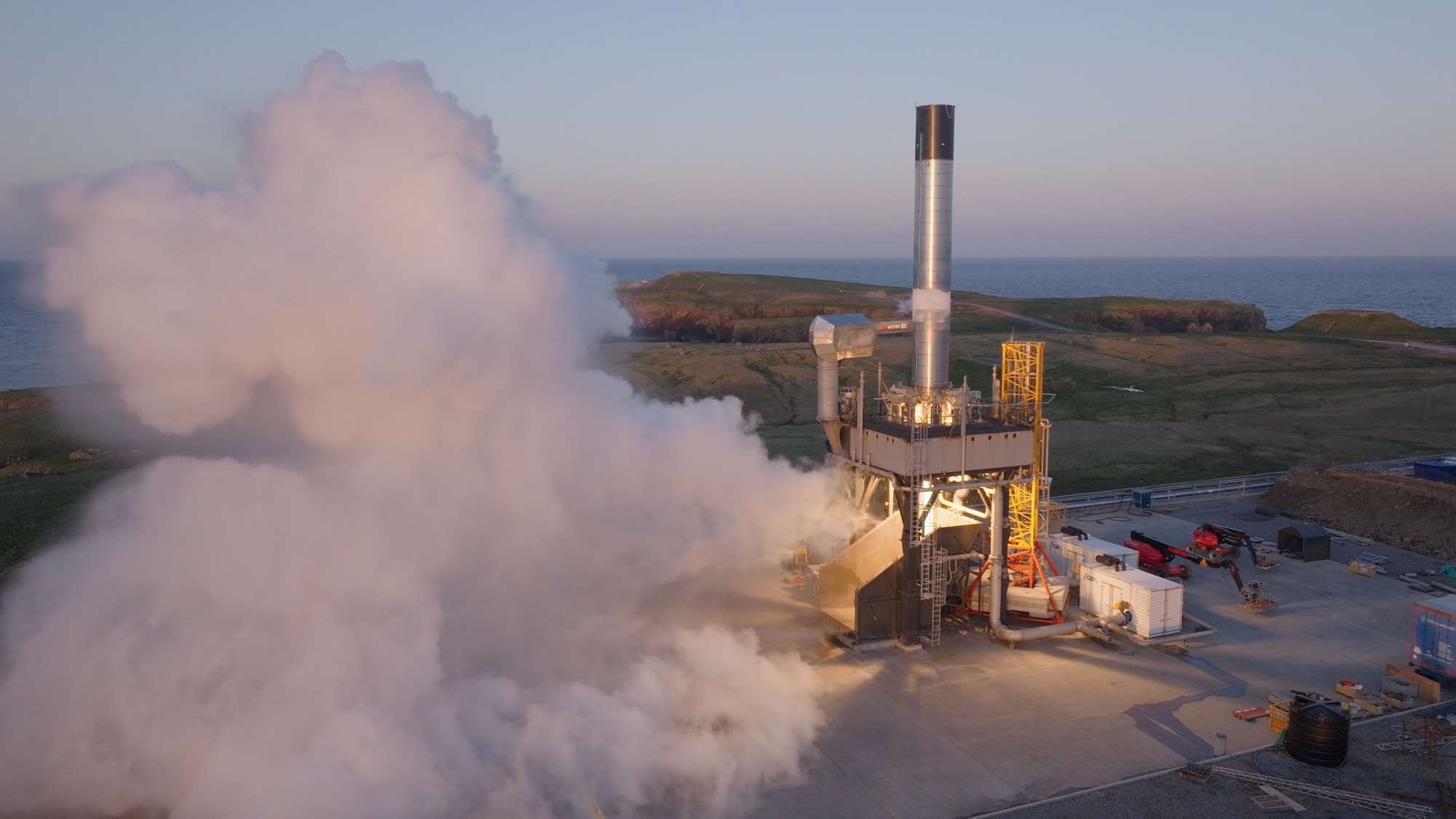RFA first stage destroyed in static-fire test
Top Stories Tamfitronics

ORLANDO, Fla. The first stage of the inaugural Rocket Factory Augsburg (RFA) rocket was destroyed in a static-fire test Aug. 19, dealing a setback to the German company just as it was nearing its first launch.
RFA confirmed in a statement posted on social media that the first stage of their RFA ONE rocket was destroyed in a test-firing at SaxaVord Spaceport in the Shetland Islands. No personnel affiliated with either RFA or the spaceport were injured.
A BBC video of the test shows what appears to be an explosion, perhaps of one of the Helix engines in the base of the stage, with flames soon shooting out of the side. Later, the entire stage is enveloped in flames and explodes.
The launch pad has been saved and is secured, the situation is under control, and any immediate danger has been mitigated, RFA said in its statement. We are now working closely with SaxaVord Spaceport and the authorities to gather data and info to eventually resolve what happened.
The company successfully performed a static-fire test of the stage in May with four of its nine Helix engines installed. RFA had since installed all nine engines, although the company did not state if all were ignited, or planned to be ignited, in this test.
The stage was not a test article but instead flight hardware intended for use on the first launch. We develop iteratively with an emphasis on real testing. This is part of our philosophy and we were aware of the higher risks attached to this approach, RFA stated. Our goal is to return to regular operations as soon as possible.
The incident, though, is a setback for the company, which was closing in on its first orbital launch attempt, expected as soon as September. In an Aug. 8 earnings call, Marco Fuchs, chief executive of OHB, which owns nearly 65% of RFA, said he believed it was a matter of weeks before RFA would be ready to attempt a launch.
He noted in the call that all nine Helix engines were installed in the first stage with static-fire tests coming soon. The second and third stages, which had already completed testing, were at the spaceport along with the payloads for the inaugural mission. What is really imminent is the full integration of the launcher and also, in a matter of weeks, a launch attempt. Well see when exactly this will take place, he said then.
Until this incident, RFA was in the leading position to be the first in a crop of European startups to attempt an orbital launch. Two other German companies, HyImpulse and Isar Aerospace, are also developing orbital vehicles but have not yet set launch dates, although Isar has previously suggested they were aiming for a launch later this year.
Spanish startup PLD Space, which will soon start construction of launch facilities at the European spaceport in Kourou, French Guiana, plans a first orbital launch attempt of its Miura 5 rocket there in 2025. United Kingdom-based Orbex is planning a first launch from Sutherland Spaceport in northern Scotland some time in 2025 as well.

Jeff Foust writes about space policy, commercial space, and related topics for SpaceNews.He earned a Ph.D. in planetary sciences from the Massachusetts Institute of Technology and a bachelors degree with honors in geophysics and planetary science…More by Jeff Foust
Discover more from Tamfis
Subscribe to get the latest posts sent to your email.






